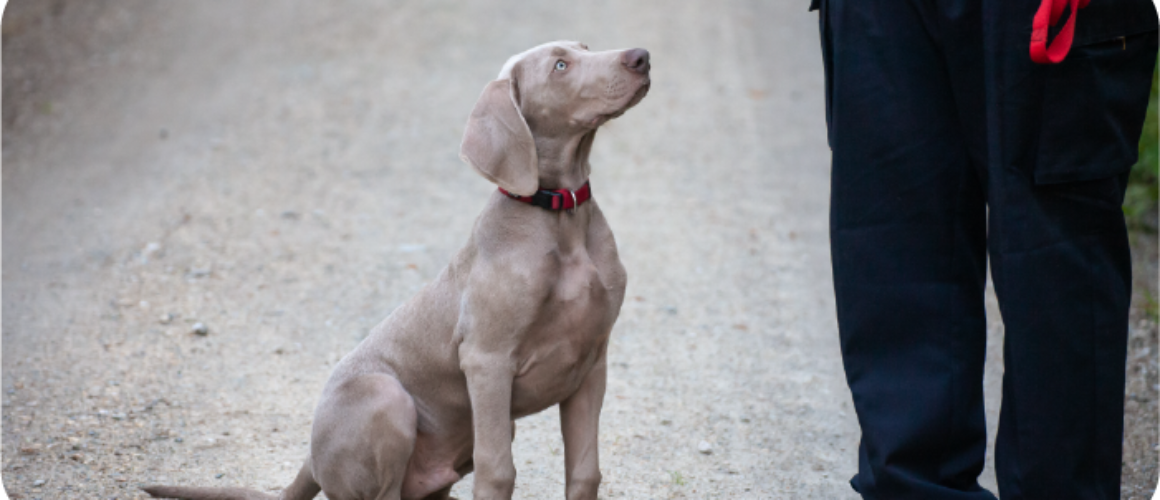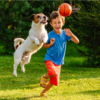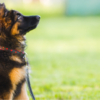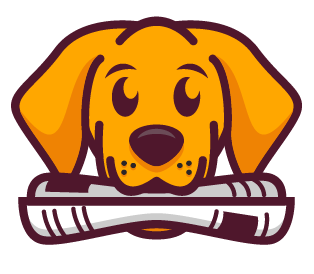Teaching Your Dog Recall
This guide has been written to help you to teach your dog an effective recall

This guide has been written to help you to teach your dog an effective recall,
however, The Pet Poo People highly recommend owners consider enrolling their new
dogs into a suitable training class.
Training classes are a great way to spend time with your dog it provides him/her with important mental stimulation and helps you to build a good relationship with each other. Classes will help you understand how your dog learns so that you can teach him/her the basic skills you will need for daily life. Teaching your dog some basic cues such as ‘sit’, ‘down’ and ‘come’, is part of responsible dog ownership and will help make life more enjoyable for you both. For advice on how to find a suitable dog trainer please visit the behaviour section on [tppp educational centre]
The Recall (i.e. “come/here”) is one of the most important commands to teach your dog and, for some owners and dogs, the most difficult. The reasons for the difficulties are many and varied but, as always, looking at it from the dog’s perspective can help us to understand these difficulties.
Common reasons that the recall command does not work reliably include:
● Insufficient reason to come… Remember that dogs do things for a reason – you need to
give your dog a good reason to want to come back to you – every time. The more you are
asking of your dog, the better the reward (or at least, the anticipation of that reward) has to be.
Asking your dog to come back to you in the face of huge distractions, such as other dogs,
deserves a Class A reward.
● Negative associations… If you have ever punished, or even reprimanded, your dog after he
has failed to come back or for something he did prior to coming back (which, to the dog, is the
same thing) then your dog may not want to come back to you. If coming back often means a
reprimand, the end of the walk, or the end of a game with another dog, then he is not likely to
want to come back.
● He doesn’t understand the command… Often because recall has never been formally
taught, or if several different commands are used.
● He doesn’t realise that it means “every time”… Dogs take time to learn that they must
obey a command first time, every time, and will do so faster if commands are not repeated
endlessly.
● Distractions…Lack of sufficient training around distractions. Gradually increasing distractions
is essential if your dog is to learn to recall no matter what is around.
● Owners not being exciting enough… If your dog thinks you are fun and exciting, and great
things happen when he is with you, then he will want to be with you – why would he want to
be anywhere else?
Some tips for developing a reliable recall
● When training a dog to come back, it works best if you never allow the dog to learn that there
is an alternative to come. Always start off working your dog or puppy on a long line and
develop a reliable recall on that before you move to working completely off lead. Walking your
dog on a long line – this can either be a long lead (available up to 30 ft or more at some large
pet shops or online stores) or a length of thin rope – has a number of benefits over extending
leads:
○ The dog is less aware of its presence,
○ a dog is easier to control on a long line than on a flexible lead as it can be reeled
in
● If your dog doesn’t respond when you call his name, give a gentle twitch on the lead to remind
him and get his attention. Do not drag or haul him in, however, as this will not teach him
anything positive. If he still is not responding, stand on the lead with one foot only (if both feet
are on the line, you could trip up if he takes off) so he cannot get further away and go closer to
him – getting as close to him as necessary (initially this might mean getting right up to him and
putting a smelly treat on the end of his nose!) to gain his attention before actually calling him
to you. For safety, always use a harness rather than a collar or headcollar if using a lead
longer than 6 feet.
● Never call your dog (unless it’s an emergency or safety issue) if you don’t think he will come. If
you do call him, make sure you do eventually get him to come, even if it takes a while. If he
doesn’t respond, try going in closer to him with a tempting treat that he can smell or,
alternatively, run in the opposite direction calling his name excitedly.
● For the same reason, don’t repeat the command endlessly – if he doesn’t respond to the first,
or possibly second call, he probably won’t to the third, fourth or fifth call… give him some other
help instead – run away from him shouting excitedly, go in close and put a titbit on the end of
his nose to attract his attention and walk backwards so he follows you.
● Choose a one or two word phrase to use as you recall command (such as “Bertie come!”) and train your dog that, if he comes back when he hears them, that something good might happen. Resist the temptation to use other words if the first one is unsuccessful. This will just weaken your training.
● Never punish, reprimand or do anything the dog might find negative after a recall command.
95% of your recalls should be for no reason other than practice– just call him, ask for a sit
and/or touch his collar, and give him a treat and praise before letting him go again (with your
release command). You can also practice putting his lead on and walking a few paces on lead
before taking it straight off again and releasing him. This helps to break negative associations
(e.g. end of walk, no more playtime) with being put on lead.
● If recalls are your biggest problem, reserve the best treats for good recalls so your dog really
looks forward to them. Once you have a reasonably reliable recall and are sure that your dog
knows what is expected of him, start introducing variable rewards. Sometimes give him a titbit,
sometimes a game or toy, sometimes praise. Keep him guessing. If you increase the value of
rewards for recall, make sure you also decrease the value of rewards used for other, less
difficult situations or commands.
● Work on your relationship with your dog. He may love you, but does he respect you and find you fun and exciting? Have you given him reason to fear an angry reaction when he does
finally come back? Be unpredictable – change direction frequently and run away from your
dog if he is unwilling to come. Make yourself interesting, use lots of praise (when it is
deserved) and reward good performances. Make your dog want to come to you! Produce toys at random intervals and, if your dog is not there to play with the toy, pretend to play with it
yourself!
● Keep your dog’s attention on you, rather than on what is going on around you. Play “find it”
with pieces of your dog’s food ration, or hide toys for him to search for.
● Consider only feeding your dog his daily ration of food while on a walk. Although this may be
inconvenient, it can be a great help if your dog is not very interested in food or toys as rewards
and probably only needs to be followed for a week or two. For every recall he fails to do, he
loses a portion (a handful for a large dog) of food) and he only gets fed on walks. It is
imperative not to weaken and feed your dog anyway out of pity when you get back, or this
approach will not work! After a day of no food, hunger will start to get the better of your dog
and he will be much more inclined to come back when called if he knows that this is his only
chance for any dinner.
● If the problem is running off (rather than simply refusing to come back) never walk him off lead
(use a flexible lead or long line) while you work on the other methods of improving his recall.
The more he runs off and has a good time, the more he will want to run off.
● If you happen to see your dog coming back of his own accord, call his name and use your
recall command – he will forget that it is a set up when he gets enthusiastic praise and a titbit
for returning!
● Increase the level of distractions gradually. Work on your recall in the house, then the garden,
then a field and finally on a walk with other dogs and people. Use more exciting rewards for
more difficult situations. Remember to practice recalls in all situations. Remember also that
dogs are very adept at pattern recognition – they will realise that, if you always put them on a
lead after calling them in a certain place or situation, it’s not a good idea to come back to you
when you call them then.







